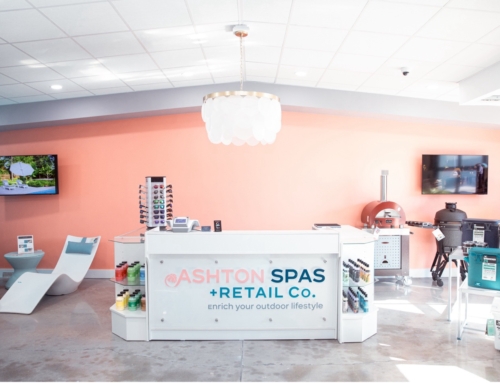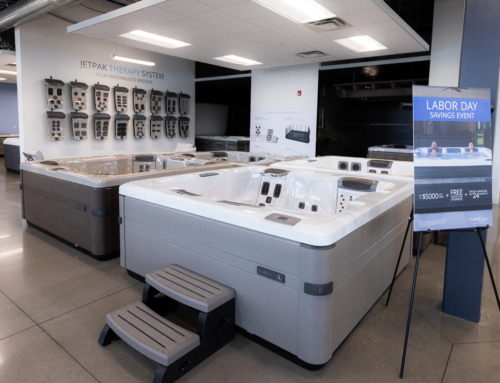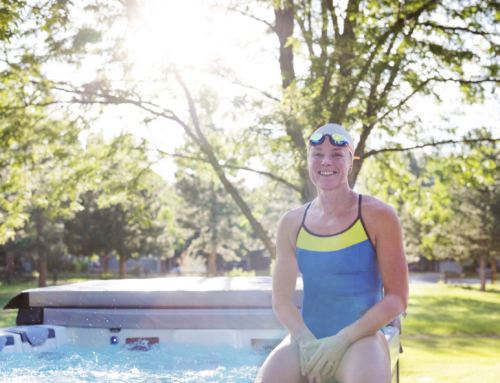As a 21st century spa retailer, you’re already aware that a web presence is vital to your business. It is equally important that your web presence consist of engaging content. Web content includes information on your company webpage, on networking sites like LinkedIn or on social media sites such as Facebook, Twitter and Instagram.
To make your web content more engaging for the consumer, you need to ask yourself this question: “Whose needs am I focusing on?” According to Forbes, the key is to put your audience’s needs ahead of your needs. Stop covertly trying to sell and focus on giving your audience what it needs as it pertains to your business and your products. Not sure how to do it? Try some of these engaging ideas.
The Value of Video
It may sound like a broken record, but you absolutely should not underestimate the power of video. Studies have shown that attaching video to web content leads to three times as many links as text-only posts. Link or include video in blogs, on landing pages to attract customers to your main webpage, on product pages and in social media posts. Try these ideas on for size:
- Customer Satisfaction Clips: Invite existing customers to participate in short (1-2 minute) video clips where they give a brief review of why they love your products and services. Use these interviews to create another short clip of best customer quotes. Post these on social media, your website and use them in video advertising promotions.
- Product Demos: Potential buyers don’t just want to hear about the better plumbing in your spas, they want to see it for themselves. Adding a video clip that shows the plumbing system in action while explaining why it’s a better system is much more likely to engage customers.
- Tips and How-Tos: In addition to sharing a spa maintenance checklist outlining what ongoing spa upkeep entails, include a short video clip that illustrates how to perform those tasks. Many of these tasks are easy to show in 30-second clips: changing filters, cleaning filters, adding chemicals, checking chemical and ph levels, etc.
There really is no end to where and how you can include video to increase web content engagement.
The Power of Podcasts
So, you already have a healthy, informative blog up and running on your retail website. How many people are reading your posts? How many clicks are you getting? Blogs are a terrific way to provide information to your current and potential buyers . . . if they have the time to sit down, search for relevant topics and then read them. The truth is many people just don’t have that extra time or choose to use it for other things. How do you engage those lost opportunities? With podcasts! And here’s why:
- A collection of articles is easier to listen to in podcast format on a morning commute than to find the time to read them.
- With podcasts, the relevant blog posts are already combined to produce specific podcasts–e.g., “Spa Maintenance,” “Spa Safety,” and “The Right Spa for You.”
- You can even integrate a short interview with a current customer to support the podcast content.
Pew Research reports that “40% of Americans currently listen to podcasts” and that percentage is on the rise. Producing podcasts and providing links to them on your website and social media is a strong strategy for engaging this particular demographic. Social Media Week has a great article on creating podcasts from blog content.
The Strength of Storytelling
A comparatively new approach to creating engaging web content is that of storytelling. The idea is to engage the brain, hook the emotions and make the audience feel like they are personally involved in the story, like they are there. Neuroeconomist Dr. Paul Zak says, “What we’ve found is that once we see a personal resonance in the brain, there is very likely to be an action following that story.” There are three types of effective storytelling:
- Personal Stories: This could be the story of the company founder or of how one of your spas changed a customer’s life (Marta has fibromyalgia, she bought your spa, using it before bed eased her pain and relaxed her body, she got a better night’s sleep, she had more energy, she became more active, she got her life back). It may not be something this dramatic, but customer stories where your spa gave them a specific benefit can be very powerful and engaging.
- Instructional Stories: These are generally how-to stories focusing on basic education like how to winterize a spa, summer-ize a spa, maintain a spa or prepare for spa arrival.
- Historical Stories: They can include how the brand came to be or the growth and development of the product and are great stories for the “About” page of your website.
Stories can be in the form of videos, podcasts, infographics or animation. They can be funny, serious or heartwarming. They should be whatever best suits the subject matter and fits your intended audience.
Storytelling is a great way to showcase the reputation and personality of your brand. Remember to include interesting points, facts and statistics to get the audience thinking and help them relate to you and your product. It’s an effective method of conveying the value of your brand and the value you offer as a retailer.
The Benefits of Breaking News
Have you ever considered getting making your content more topical by keeping up with breaking news stories? A simple Google News search for “Hot Tub News” resulted in three current reports that could easily lead to engaging content.
“1-year-old boy drowns in hot tub at Pasco birthday party”
In this story, a boy wanders into a spa connected to a swimming pool. A timely blog post about child safety around pool connected spas is something readers would find engaging. While most people are aware that using covers on free-standing spas increases child safety, many may not be aware of safety precautions for other types of spas.
“Jenelle Evans is mommy-shamed after sharing photo of sons in hot tub”
The star of the television show “Teen Mom 2” received a lot of backlash for allowing her children, ages eight and three, to spend time in a hot tub. This article in the national news could spur you to write a blog on age limits and exposure limits for kids in hot tubs.
“Wanted fugitive found hiding inside hot tub full of water at Upstate NY home”
This is a somewhat humorous story about how a woman found a fugitive from police hiding in her filled, heated and covered hot tub. Can you think of a better occasion to write about the importance of securing hot tub covers with locks?
June Sullivan at Long Island’s Best Hot Tubs agrees that it pays to keep up with current news, “We also try to stay media savvy and pay attention to popular thought that has to do with hot tubs. When Beyonce got significant attention from a social media post of her baby in a spa, we used that as an opportunity to write a post about the question of hot tubs and child safety.”
The idea is to use these stories to educate people on the proper and safe use of spas using facts, statistics and expert opinions. Whether the news is negative, gossipy or humorous, it can provide some of the best opportunities to create engaging content for your website visitors.
Some Last Advice
The pros at Long Island’s Best Hot Tubs remind us to “recognize that Google cares about how active you are online. So we make it a point to stay consistent with our blog posts every week and on social media every day.” Other advice they offer is this:
- Focus on questions customers ask showroom salespeople.
- Look for topics online.
- Write around how the question is actually asked in Google (e.g., Are hot tubs bad for the environment?”).
Remember, the key is to produce content that addresses what consumers want in ways they find interesting and engaging. Put customer needs ahead of your needs and go make that sale.









Leave A Comment